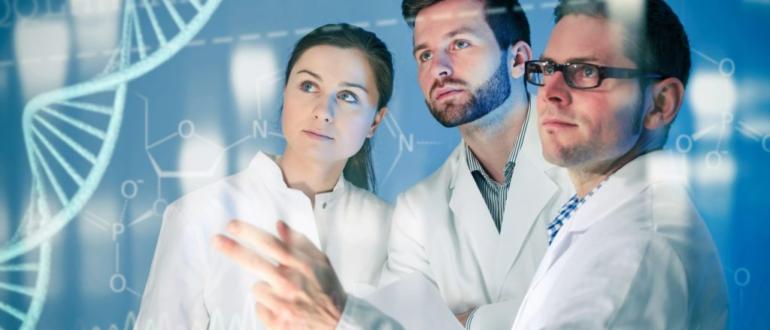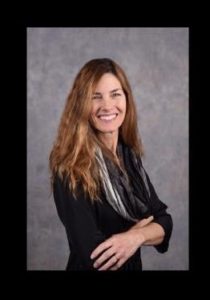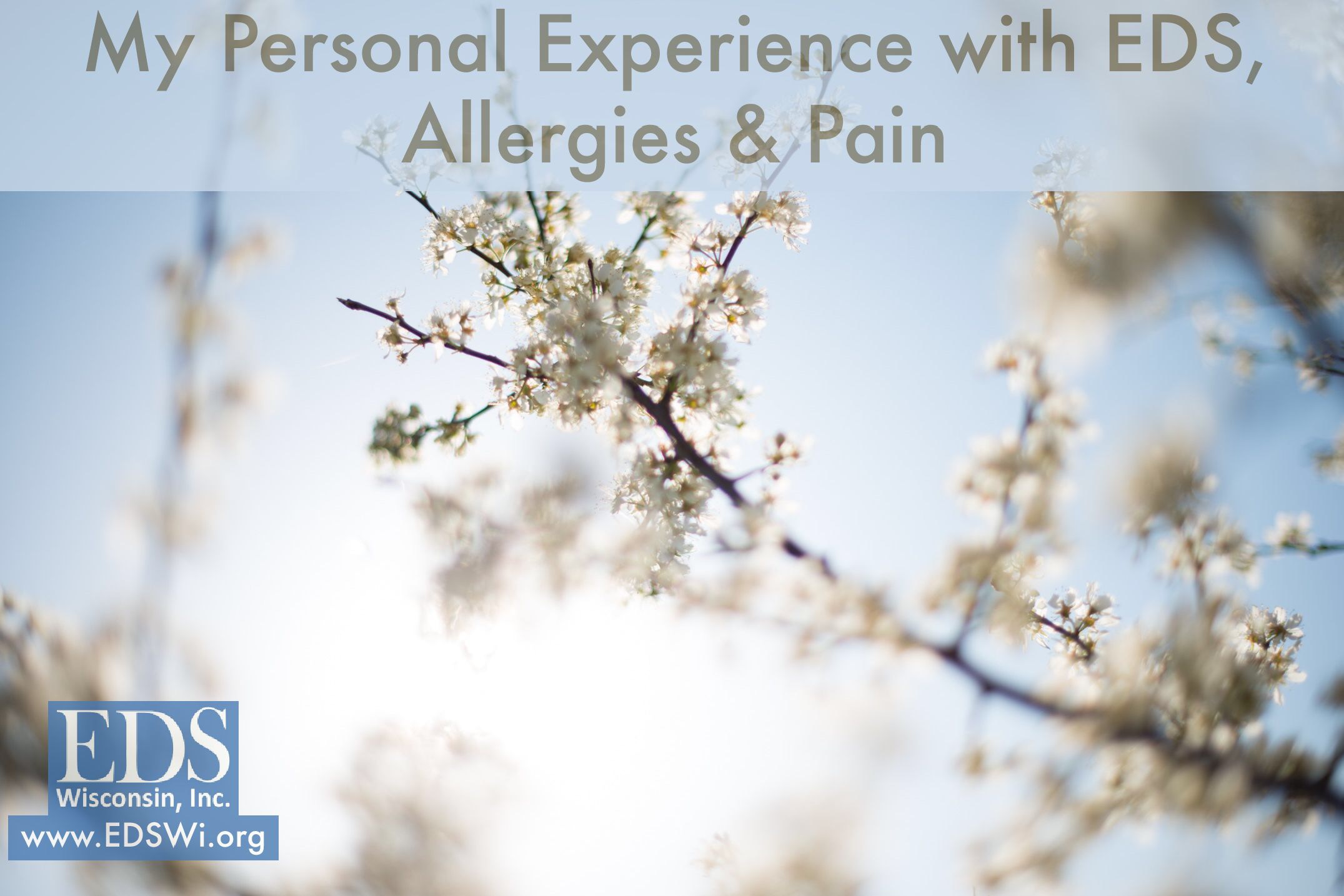By Tammy Kosbab, Edited by Jude Houston
The other morning when I woke up ALL of my muscles ached, my head was throbbing, my eyes felt a little puffy, and I really, REALLY did not want to get out of bed. Similar to the past, I couldn’t understand what I did to cause this and knew it was best to forget even trying to figure this out because of the awful brainfog! It seemed my entire body had turned into muck overnight.
Thankfully, because of Dr Lawrence Afrin, Dr Anne Maitland, Dr Mathur, Dr Steinman, and others in the EDS community like EDS Wellness, EDS Awareness, and the EDS Society, I now know that these symptoms were a result of my being swollen, inside and out. I also now know that this swelling is called angioedema and that it is caused by “allergies.” The swelling certainly wasn’t the kind where a stranger could look at me and immediately notice. However, it was similar to the kind of swelling I had experienced my entire life that I always thought meant that I had a chubby face. I used to think that it was normal to have red marks and indents on my skin from my clothing for hours after changing, or similar red marks and indents on my skin from my bedsheets for hours after waking up.

These are some photos of me swollen and not swollen. It is NOT always this noticeable.
Despite my inability to think clearly, it was apparent that there was only one thing I knew I had to do. I reached for the medication that is ALWAYS within my reach because I know it helps significantly. I took the Gastrocrom. Unhappily, I crept out of bed, went to the bathroom and caught a glimpse of the mirror. Once again, I saw my “old” swollen face, which is the face that I previously thought was ‘normal.’ There was a red rash on my face, a large indentation and two blisters where my skin must have tried to swell under my CPAP mask when I was asleep. To test my Mast Cell Activation (MCA) diagnosis, I stepped on the scale to see if indeed the diagnosis was correct and…literally overnight, I gained about 6 pounds from my previous weight. Wow! Prior to this diagnosis, I often gained 9 pounds in 12 hours or less and I thought that was normal.
I’m still amazed that ALL of the seemingly unrelated symptoms came back. Even now, days later, when I stand up too fast, I got dizzy and when I am upright for too long, I become very tired. I have had burning tongue/mouth sores, bleeding gums, heart palpitations, nerve pain, muscle pain, fascia pain, eyeball pain, ear pain, joint pain, and in case I forgot to mention it – I had debilitating pain! Sadly, like many others Ehlers-Danlos Syndrome (EDS), this is how I previously felt on a daily basis. It had became my normal throughout my entire life until I was properly diagnosed.
Since my diagnosis of MCAD, my health issues have changed for the better these past 4 months because now I know why my issues escalate and what I can do about it to perhaps reduce the symptoms.
Here is a quick and hopefully simple explanation of how I understand MCAD for those who don’t quite understand it. Mast cells throughout the body contain histamine, heparin, cytokines and other “mediators.” Mast cells are commonly known for releasing these mediators in response to SPECIFICS allergens for retain people, such as strawberries, peanuts, mold, pollen, grass, and others. These are called IgE mediated AKA specific allergies and this is what the allergist would look for when performing a skin prick test. THis IS NOT Mast Cell Activation Disorder.
Instead, MCAD is when a person has a normal number of unstable mast cells which are easily triggered to release the mediators once a certainly threshold is reached. It’s like mast cells with ADHD – they overreact and can release mediators to just about any non-specific thing in the environment.
In other words, the resulting histamine and other mediatora that are constantly being released in the body wreaks havoc! If you want to know what MCAD can do to a person research the word “histamine” and you will find histamine allows blood vessels to be permeable and thus, this is why fluid leaks out of the vessels resulting in tissue swelling.
Think about this: Where are blood vessels located? All over, mostly INSIDE the body, right?
Can we see them? Not usually.
So if a blood vessel in the ____________ (insert internal body part name here such as stomach, colon, brain, spinal column, muscle, etc.) is leaky, can a person see that this internal body part is swollen? Probably not.
Can a person feel it? Well I certainly can, but thats only because I now know that these things aren’t normally normal and since then hey typically happen at the same time that I have all of the other symptoms, it makes complete sense.
The day before this happened it was a beautiful spring day with wonderful fresh-air – pollen and all. I tried to stay inside but have you ever tried to stay away from the air?!? Probably my biggest mistake that day was forgetting to take one of four doses of the Gastrocrom. Live and learn!
Gastrocrom is a medication that “calms” down or stabilizes the mast cells. It’s like taking a bag of oranges and making the holes in the net smaller so the oranges don’t fall out so easily. Imagine the net is the mast cell and it is holding the oranges, which represent the histamines and other mediators.
When the histamines, for example, are released they circulate in the blood until they find a place where they can plug in and be utilized. These are called histamine receptors. There are 4 receptors in the body, but only two of them have known medications that block the action of the Histamines. THESE are called H1 and H2 receptor blockers. I take the H1 blocker called Allegra in a high dose and the H2 blocker Pepcid in a higher than normal dose under the guidance of my doctor.
Tomorrow will be my recovery day which includes relaxation, a chance to retighten the netting and decrease the swelling while also getting work done. The fridge and toilet are also close by so I think I should be good. Ah yes, this is life with the ups and downs of MCAD.
If this sounds like you or if you wish to understand more, please do research and find someone to help you. It is very important when finding someone to help you to remember this: MASTOCYTOSIS IS A CONDITION OF TOO MANY CELLS and it is not MCAD. Also there is not a lot of research that has been done on MCAD and many medical professionals may have never even heard of it.
My favorite resource is the book: Never Bet Against Occam by Lawrence Afrin. Recently I had the pleasure of meeting him at an EDS Wellness’s retreat “Wellapalooza”. Fortunately, I had the amazing opportunity to have relatively long conversations with both Dr. Afrin and Dr Maitland about MCAD in 2017, and was also able to hear their presentations on MCAD several times in person. This information presented greater understanding and direction and provided an opportunity to take back control of my health even when a spring day fills my life with fresh air. Find their presentations on EDS Awareness and EDS Wellness websites.












